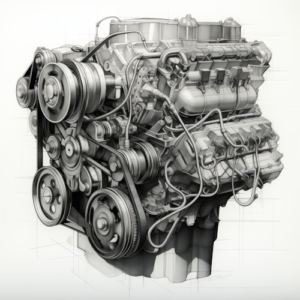Since I remember, I’ve heard “This car comes with a V6 (V8, V10, V12) engine”. Today, for the first time I looked into it.
The “V” is not for version. 
These are the most common engine configuration within an internal combustion engine:
- Inline (Straight) Engine: The cylinders are arranged in a straight line. e.g Inline-4 and inline-6 engines
- Boxer Engine (Flat Engine): The cylinders are horizontally opposed, with two banks facing each other. This creates a flat engine, and it’s known for a low center of gravity. e.g Subaru and Porsche are known for using boxer engines.
- V6 Engine: 6 cylinders. It has two banks of three cylinders each in a V shape.
- V8 Engine: 8 cylinders. The cylinders are arranged in two banks of four, forming a V shape when viewed from the front of the engine.
- V10 Engine: 10 cylinders. Similar to V8 engines, but with an additional bank of cylinders.
- V12 Engine: 12 cylinders. Two banks of six cylinders each. Luxury car manufacturers such as Rolls-Royce, Bentley, and Ferrari have used V12 engines in their vehicles.
- W Engine (W12, W16): 12 or 16 cylinders. Three or four banks of cylinders arranged in a W shape. Bugatti Veyron and Chiron use W16 engines, and some luxury cars use W12 engines.
- Rotary (Wankel) Engine: Rotary engines do not have conventional cylinders. They use a rotor that spins in a housing. The rotary engine is known for its simplicity and high power-to-weight ratio.
- Radial Engine: An odd number of cylinders arranged in a circle around the crankshaft. Commonly used in aviation, with cylinders radiating outward from a central point.
Reference: Engine Configuration Wikipedia page (You can find pictures for these engines in the link as well)
